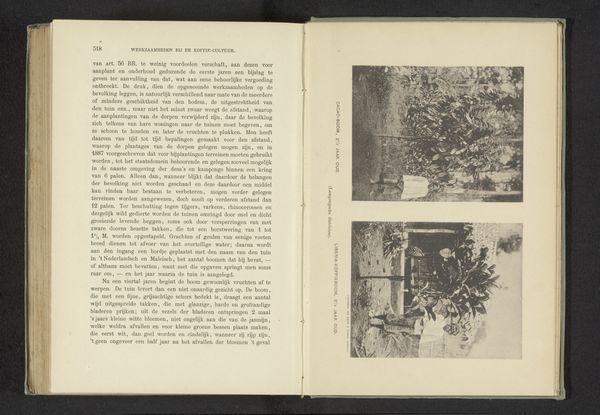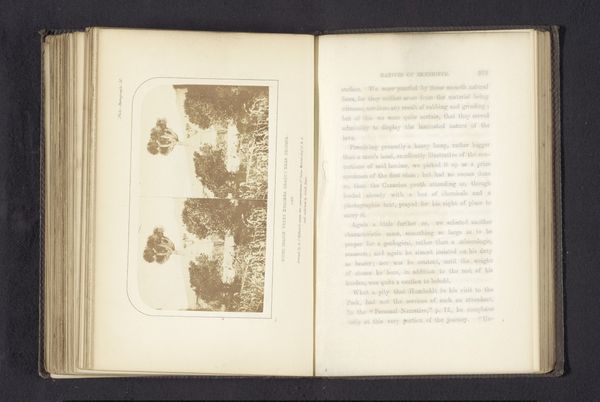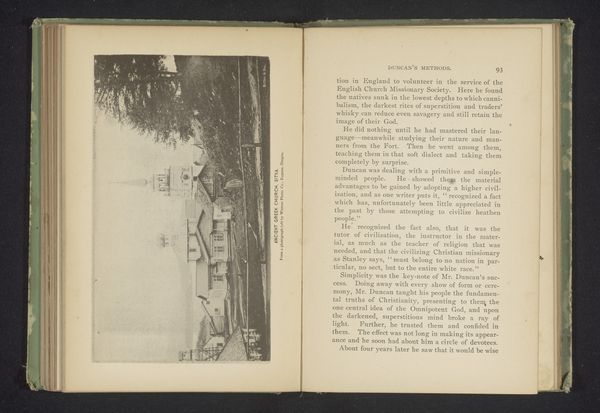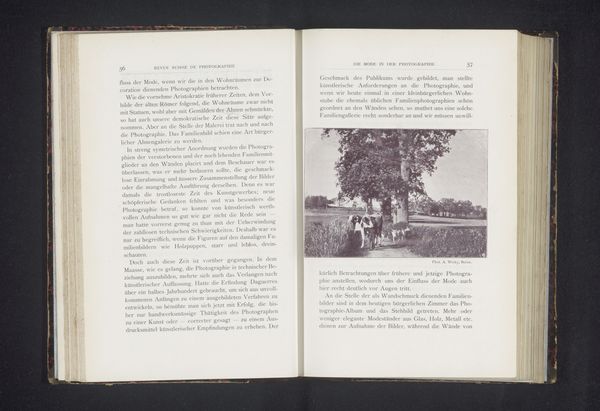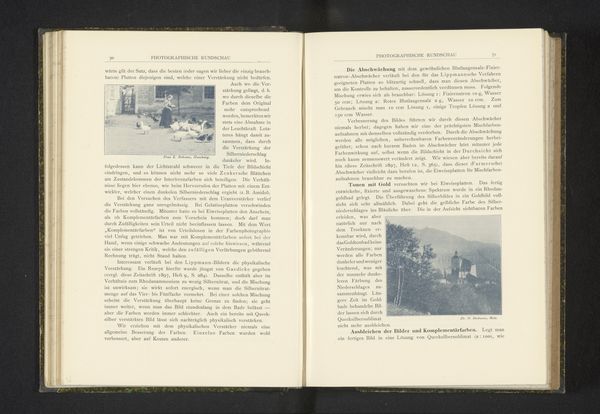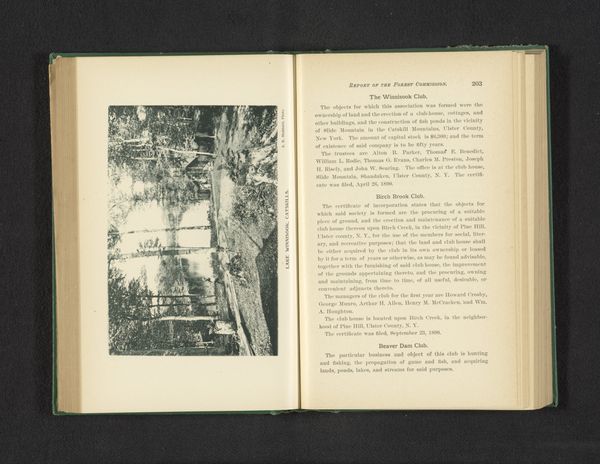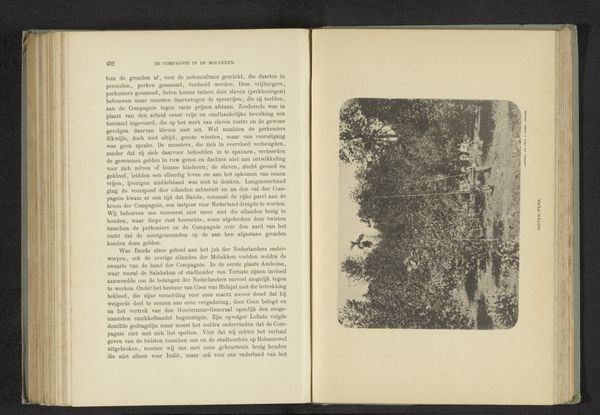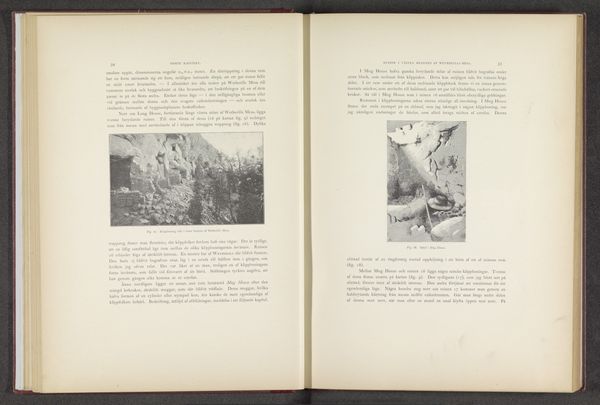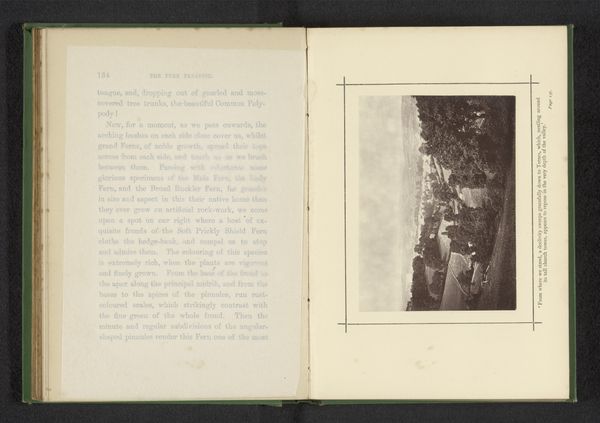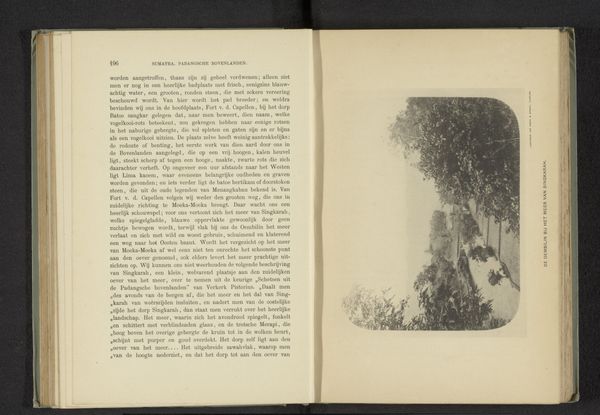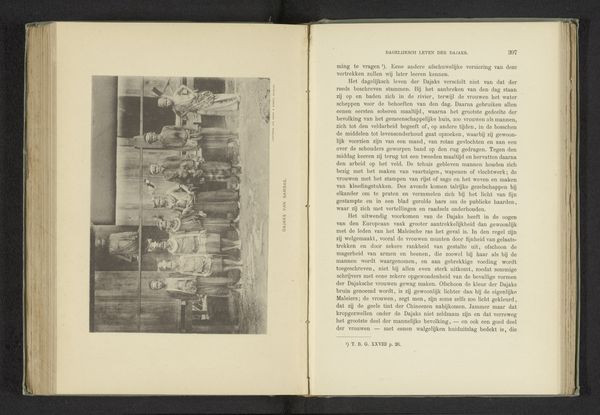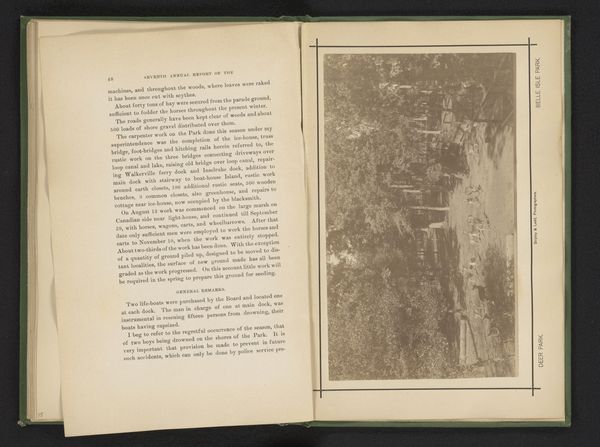
print, textile, paper, photography, albumen-print
#
portrait
#
script typeface
#
aged paper
#
still-life-photography
# print
#
typeface
#
landscape
#
textile
#
paper
#
photography
#
hand-drawn typeface
#
stylized text
#
thick font
#
genre-painting
#
handwritten font
#
classical type
#
albumen-print
#
historical font
#
small font
Dimensions: height 89 mm, width 69 mm
Copyright: Rijks Museum: Open Domain
Curator: Let’s explore this intriguing page from a pre-1879 publication. The page presents two albumen print photographs: one depicting a Methodist church, the other a Congregational church, both located in Waltham, Massachusetts. Editor: It’s striking how the sepia tones lend an immediate sense of antiquity. The texture of the aged paper really draws the eye. You almost want to reach out and touch it. But there's also something austere about these images of these almost plain looking, boxy churches. Curator: That austerity aligns with the historical context. Religious architecture of that era in America often favored functionality over ornamentation. These churches served as cornerstones of community life, reflecting the values of hard work and piety. I find myself thinking about the socio-political implications of establishing sacred spaces during this time. What populations are served, or conversely, not served by the very establishment of churches? Editor: Focusing on their construction, the way these churches were built would've directly influenced community economics—local lumber mills, the labor of carpenters and masons, the purchasing power directed into pews or stained glass windows. Did those industries equally distribute wages? Where were these resources and funds actually being directed in society? The act of building becomes as central as its spiritual intent. Curator: Precisely. And who were the photographers? They would have had to deal with some heavy technology! Their choice of framing is interesting too; not as straightforward documentation. How might their identity shaped what and how they were willing and able to portray these churches and surrounding neighborhood. Editor: That is intriguing—that these photographic materials themselves required specific labour and craftsmanship is worth highlighting. From preparation to development, these prints carry stories beyond their depicted subjects. Each chemical bath, each precise timing is now material. And the fact that the book could contain and carry this documentation allowed a form of accessibility. Curator: A fascinating point, it suggests an attempt to preserve a visual record and propagate values through materiality. These churches might serve as visual rhetoric, reflecting dominant culture, influencing social status and power dynamics. It's something to further contemplate. Editor: Absolutely. This page certainly offers layers of narrative concerning production, distribution, consumption of photographic materials. From the trees and the paper to the silver used to print these photographs—this all leaves you with so much to digest.
Comments
No comments
Be the first to comment and join the conversation on the ultimate creative platform.
